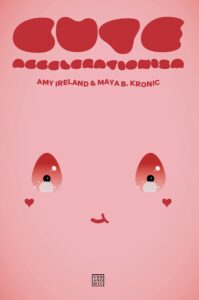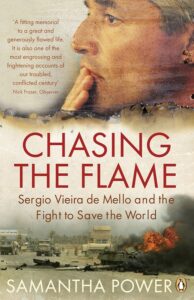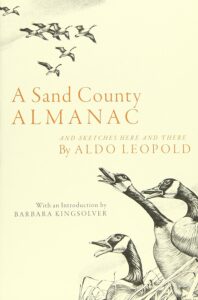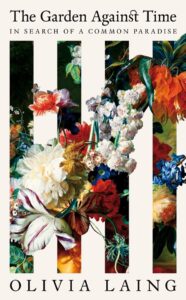For this installment of Indie Reads, we asked members of the Independent staff to offer some book recommendations now that summer is over and the transition from frothy beach reads to more serious tomes is well underway. The result is a selection that ranges from the philosophical meaning of Hello Kitty to a hair-raisingly plausible account of humanity’s destruction. We’re nothing if not well-rounded.
Amy Ireland and Maya B. Kronic, Cute Accelerationism
Drawing on every discipline from gender studies to demonology, the deeply irreverent Cute Accelerationism challenged everything I thought I knew about human nature.

For the uninitiated, accelerationism is a school of philosophy or ethics that compares human society to a snowball rolling down a hill: always changing, always evolving (or devolving), and most important, always picking up speed.
But instead of focusing on the political implications of accelerationism, Ireland and Kronic identify a new axis of cultural evolution in the form of pink ribbons and Hello Kitty dolls. Sometime in the mid-20th century, they argue, a bright and saccharine sensibility seemingly willed itself into pop culture. But where did it come from, and where is it taking us?
Cute Accelerationism tracks the evolution of cuteness throughout history, from the term’s 18th-century origins (initially meaning “clever” or “shrewd”) to its very different modern usage. It dares to ask a slew of uncomfortable questions: Where does our appetite for cuteness originate, and how have advertisers hijacked that appetite to turn a profit? Are we approaching an age when humans regularly fall in love with two-dimensional images, or is that age already here? And why is it that, when confronted with a plush toy, many people have both an urge to hug it and an urge to beat it to a pulp?
After reading this, I don’t think I even know what “cute” is anymore. All I know is that it scares me. —Parker Mumford
Samantha Power, Chasing the Flame: One Man’s Fight to Save the World
This brilliant biography of United Nations peacemaker Sergio Vieira de Mello isn’t just the story of an official most of us have never heard of. It’s a whirlwind tour of the geopolitical crises of the last 50 years that helped me understand more about the global mess we somehow continue to be in.

We follow the ambitious, charming de Mello as he ascends the ranks of the U.N. High Commission for Refugees and leads troubleshooting missions worldwide. We’re with him as he tramps through the Cambodian jungle to negotiate (and share a bottle of French wine) with the murderous Khmer Rouge. We watch as he turns the political tables in the newly established nation of East Timor, giving the Timorese people governing authority over his own U.N. delegation. We raise our eyebrows when he shops for gifts for the brutal Serbian dictator Slobodan Milošević.
What makes Vieira de Mello so memorable — his insistence on talking with every faction in a crisis, often outside the lines of official conduct — also earned him criticism for appearing to shield war criminals from accountability. He died a lonely death when rescue workers were unable to reach him beneath the rubble of a building destroyed in the first suicide bombing of the Iraq War.
Vieira de Mello was an optimist who was given to bouts of despair over the U.N.’s limited role and tepid support from global powers. He grew especially despondent observing repeated mistakes in its crucial but sometimes hapless missions. “I wonder if those of us engaged in peacekeeping are the human equivalents of goldfish,” he said. “These animals are said to have memories that last about two seconds. For them swimming around in a bowl will not be interminably dull. When it applies to us the impact is greater and far more serious.” —Katy Abel
Aldo Leopold, A Sand County Almanac
American environmentalism exists in its modern form largely thanks to two books. The first is Silent Spring by Rachel Carson, whose criticism of pesticide use led directly to the creation of the Environmental Protection Agency. The second book is less well known but perhaps even more influential: Aldo Leopold’s posthumous 1949 magnum opus, A Sand County Almanac.

A mixture of nature writing and essays, the book describes a year at the scientist-turned-author’s home in Wisconsin and his travels across North America. It brims with Leopold’s vivid turns of phrase. A flock of geese “cleave the murk of the March thaw.” A displaying April woodcock “tumbles like a crippled plane, giving voice in a soft liquid warble.” A dying wolf’s eyes are full of “a fierce green fire.”
But these stories also frame the book’s central thesis: that all of nature is good and worthy of our protection because it is “a community to which we belong.” Leopold looks at an animal that might harm us, like a wolf, and sees that, without them, whole mountain ranges are defoliated by out-of-control deer herds. He looks at an obscure, tiny flower and concludes that it needs no purpose — it is “a small creature that does its job quickly and well,” and that’s enough.
“The last word in ignorance is the man who says of an animal or plant, ‘What good is it?’ ” Leopold writes. If nature is good, then every part is good — whether we understand it or not. —William von Herff
Olivia Laing, The Garden Against Time: In Search of a Common Paradise
As Covid lockdowns began and populist nationalism bubbled up on both sides of the Atlantic, British writer and cultural critic Olivia Laing threw herself into the rescue of the small, walled domestic garden surrounding the house that she and her husband, the poet Ian Patterson, bought in 2020.

The Garden Against Time is in part a record of that work, with the expected design conundrums, plant lists, and musings over what should be saved and what determinedly excised. But the book is much more. Skillfully interwoven are vivid descriptions of the natural world; lyrical meditations on time, growth, and decay; and fragments of memoir. What ultimately unfolds is a trenchant commentary on the economic fault lines in contemporary society through the lens of the garden.
To that end, Laing offers a deeply reflective exploration of the idea of the garden and its purpose in English society. Even as she devotes herself to her own garden’s restoration, Laing wrestles with the duality of the garden as both a place of refuge and of exclusion and exploitation. She questions whether the whole enterprise is ineluctably tied to social inequity and injustice and to the kind of privilege that is at odds with her social and political commitments. Is the private garden, including her own, a “tarnished, even contaminated zone, a source of unquestioned privilege, the gleaming fruit of dirty money?”
Laing compellingly explores these dueling perspectives through personal anecdotes and historical and philosophical reflections, all suffused with a sense of wonder and discovery in the natural world. Although her questions ultimately remain unanswered, the book is never heavy, and Laing remains hopeful throughout. —Edouard Fontenot
Annie Jacobsen, Nuclear War: A Scenario
In deciding on a theme for this roundup, we were split between nonfiction books and horror stories in anticipation of the upcoming spooky season. Annie Jacobsen’s harrowing Nuclear War: A Scenario could be filed under both categories.

Jacobsen’s meticulously researched hypothetical narrative covers the sequence of events that would take place in the first hour after a surprise nuclear attack by North Korea on the United States. Her description of the seconds following the detonation of a one-megaton nuclear warhead in Washington, D.C. gave me nightmares for days: truly an illustration of the oft-quoted assertion that following a nuclear war, “the living will envy the dead.”
An all-out nuclear exchange between the United States and Russia involving thousands of warheads ensues, followed by a decades-long nuclear winter in which all human life that survives is forced to live underground due to the destruction of a large part of the ozone layer and the earth’s subsequent exposure to the sun’s ultraviolet rays. Jacobsen estimates that it would take our planet 24,000 years to fully recover its ecosystems after that fateful first hour.
All that is terrifying enough. But Jacobsen’s account of the fatal mix of diplomatic miscommunication, protocol failure, and hubris that creates the unfolding catastrophe is the part of her story that has stayed with me the most, transforming the threat of nuclear war from a remote Cold War-era concern to a frighteningly contemporary possibility. In the end, I was left with the discomfiting realization that every moment of civilization we experience could well be our last — and that we should appreciate these relatively good times as long as we can. (Or at least start building those underground shelters and stockpiling water and canned goods while there’s still time.) —John D’Addario



